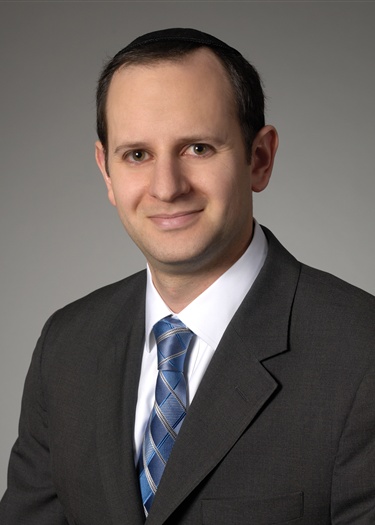Tax Update
U.S. House and Senate Finance Committee Reconciliation Bills Target University Endowments with Significant Changes to Excise Tax

The recently introduced U.S. House and Senate Finance Committee versions of the One Big Beautiful Bill Act would significantly alter Section 4968 of the Internal Revenue Code, which currently imposes an excise tax on the net investment income of certain private university endowments. Both proposals would replace the existing flat rate of 1.4% with a new tiered rate structure, topping out at 21% in the House bill and 8% in the Senate Finance Committee bill. They would also expand the tax base to include certain student loan interest and royalties derived from federally funded intellectual property while altering the criteria determining which institutions are subject to this tax.
I. Current Law
Enacted by the 2017 Tax Cuts and Jobs Act, Section 4968 currently imposes a flat 1.4% excise tax on the net investment income of certain private colleges and universities.
The tax applies to “applicable educational institutions,” defined by four criteria:
- At least 500 tuition-paying students were enrolled during the previous tax year. Students count as tuition-paying after accounting for institutional and governmental scholarships or grants but not third-party scholarships.
- Over 50% of tuition-paying students must reside in the United States for at least part of the previous year.
- The institution must not be a state college or university.
- Assets unrelated to its exempt purpose must total at least $500,000 per student, calculated based on the daily average number of full-time students, with adjustments for part-time students.
“Net investment income” generally includes interest, dividends, rents, and royalties as well as Subpart F (other than certain insurance income) and global intangible low-taxed income (GILTI) from a controlled foreign corporations.
II. Overview of Proposed Changes
- Higher Tax Rates: Both the House and Senate bills propose replacing the flat 1.4% rate with tiered structures. The House bill sets rates as high as 21%, while the Senate bill caps the highest rate at 8%.
- Senate-Specific Condition: The Senate bill restricts the tax to institutions participating in Title IV federal student aid programs.
- Student Adjusted Endowment: Both bills calculate a new “student-adjusted endowment” by dividing the fair market value of an institution’s nonexempt assets by the number of “eligible students,” a definition that effectively excludes most foreign students and others ineligible for federal financial aid, thereby increasing the calculated per-student endowment value for institutions with significant international enrollment.
- Additional Exemptions: Both bills introduce an exemption for “qualified religious institutions.”
- Expanded Tax Base: Both bills would explicitly tax certain student loan interest and royalties from federally funded intellectual property — categories currently excluded.
III. Comparison of House and Senate Bills
|
|
House Bill |
Senate Bill |
|
Tax Rate Structure |
Four tiers based on student-adjusted endowment:
|
Three tiers based on student-adjusted endowment:
|
|
Applicable Institutions |
Maintains exemption for state colleges and adds exemption for qualified religious institutions (founded after July 4, 1776, religious affiliation, published religious mission). |
|
|
Net Investment Income Definition |
Explicitly includes student loan interest and “federally-subsidized royalty income.” |
Same as House version. |
|
Effective Date |
Tax years beginning after December 31, 2025. |
Same as House version. |
IV. Planning Considerations
Given the significant proposed tax increase and broadening of the tax base, large private educational institutions may consider certain actions to mitigate the impact of the proposed changes. This could include taking steps to accelerate gain recognition to a taxable year to which the current 1.4% rate applies. Institutions will also likely reevaluate the tax efficiency of structures through which they currently make investments that are expected to generate current net investment income. In certain cases, institutions may seek to redeem, transfer, or otherwise dispose of interests in investment funds or restructure the manner in which they hold such interests (e.g., by seeking to move to different feeder vehicles or alternative holding structures) in order to address their tax and liquidity objectives. Private fund managers that accept investments from large private educational institutions should be prepared to discuss these matters with their clients.
Any such steps should be undertaken with caution, as the current legislative proposals contain broad antiavoidance provisions that authorize the Treasury Secretary to issue guidance targeting arrangements designed to reduce or eliminate taxable net investment income or asset valuation.
Attorney Advertising—Sidley Austin LLP is a global law firm. Our addresses and contact information can be found at www.sidley.com/en/locations/offices.
Sidley provides this information as a service to clients and other friends for educational purposes only. It should not be construed or relied on as legal advice or to create a lawyer-client relationship. Readers should not act upon this information without seeking advice from professional advisers. Sidley and Sidley Austin refer to Sidley Austin LLP and affiliated partnerships as explained at www.sidley.com/disclaimer.
© Sidley Austin LLP
Contacts
Offices
Related Resources
Capabilities
Suggested News & Insights
- Stay Up To DateSubscribe to Sidley Publications
- Follow Sidley on Social MediaSocial Media Directory

